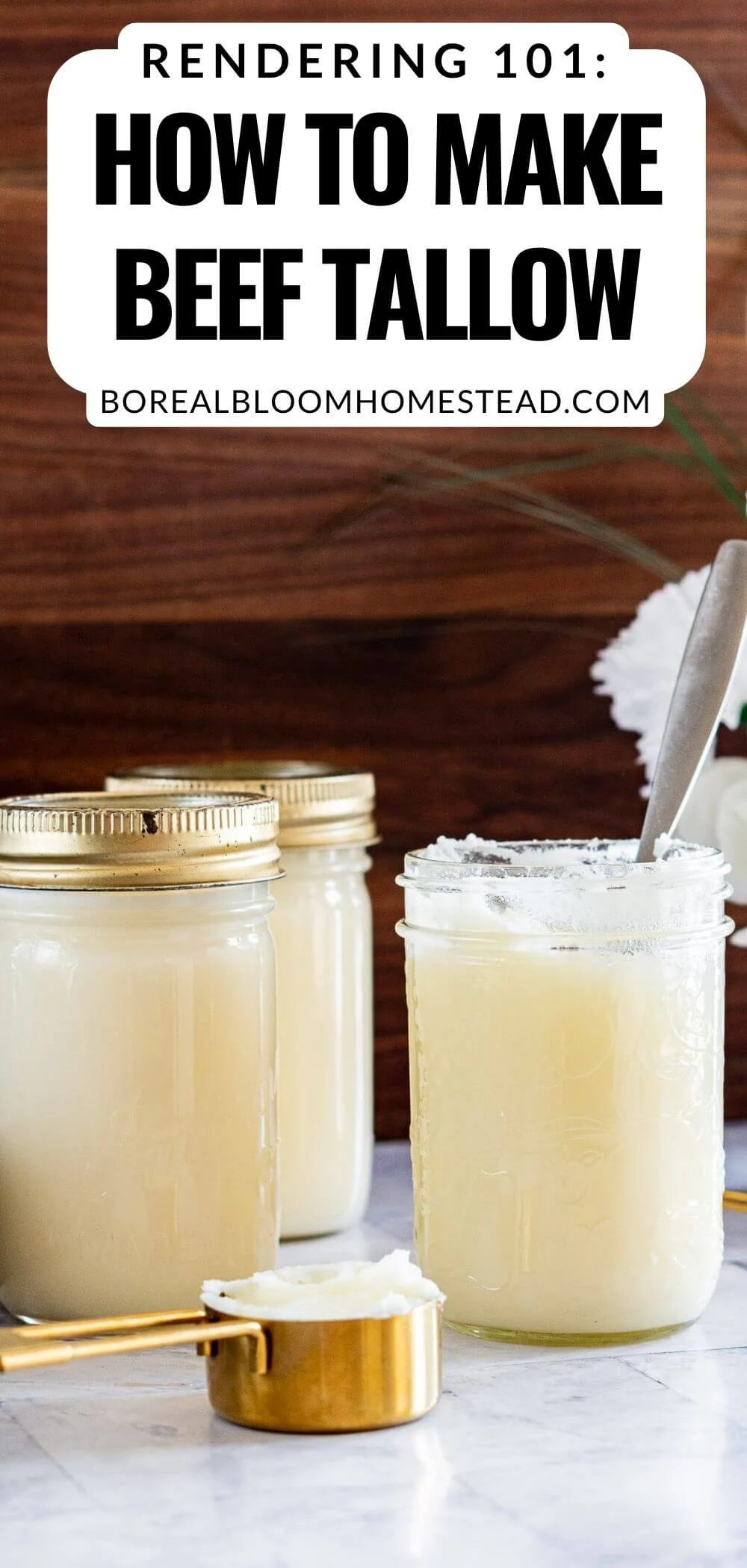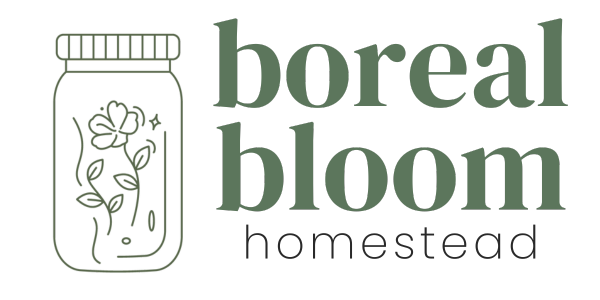Learn how to make your own beef tallow with this easy-to-follow guide. You'll love this by-product of beef butchery.
When we choose to step away from the hustle and bustle of modern convenience, we find ourselves exploring the beauty of living a simpler, less processed life. We learn to appreciate what we have, to use every bit, and to waste nothing.
This isn't just about being frugal; it's about respect and gratitude for the resources we are fortunate to have. Take, for example, the humble cow. When we consume beef, we're partaking in a gift from that animal.
Isn't it only right then, that we honor that animal by using every bit we can?
That's where making beef tallow comes into play. It's one of those overlooked byproducts that many of us ignore, but it's a wonderful bonus waiting to be discovered.

As an Amazon Associate I earn from qualifying purchases.
Jump to:
What Is Tallow?
Tallow is the rendered fat of ruminant animals like cows, sheep, and goats.
It's a versatile product that has been used throughout history for various purposes, from cooking to candle making. Because of its high smoke point - 480F, tallow is particularly good for frying and sautéing.
Plus, it's a sustainable way to use more parts of the animal, helping to reduce waste and make the most of our resources.
Did you know? Many fast food restaurants used tallow to fry their french fries until seed oils became mainstream!
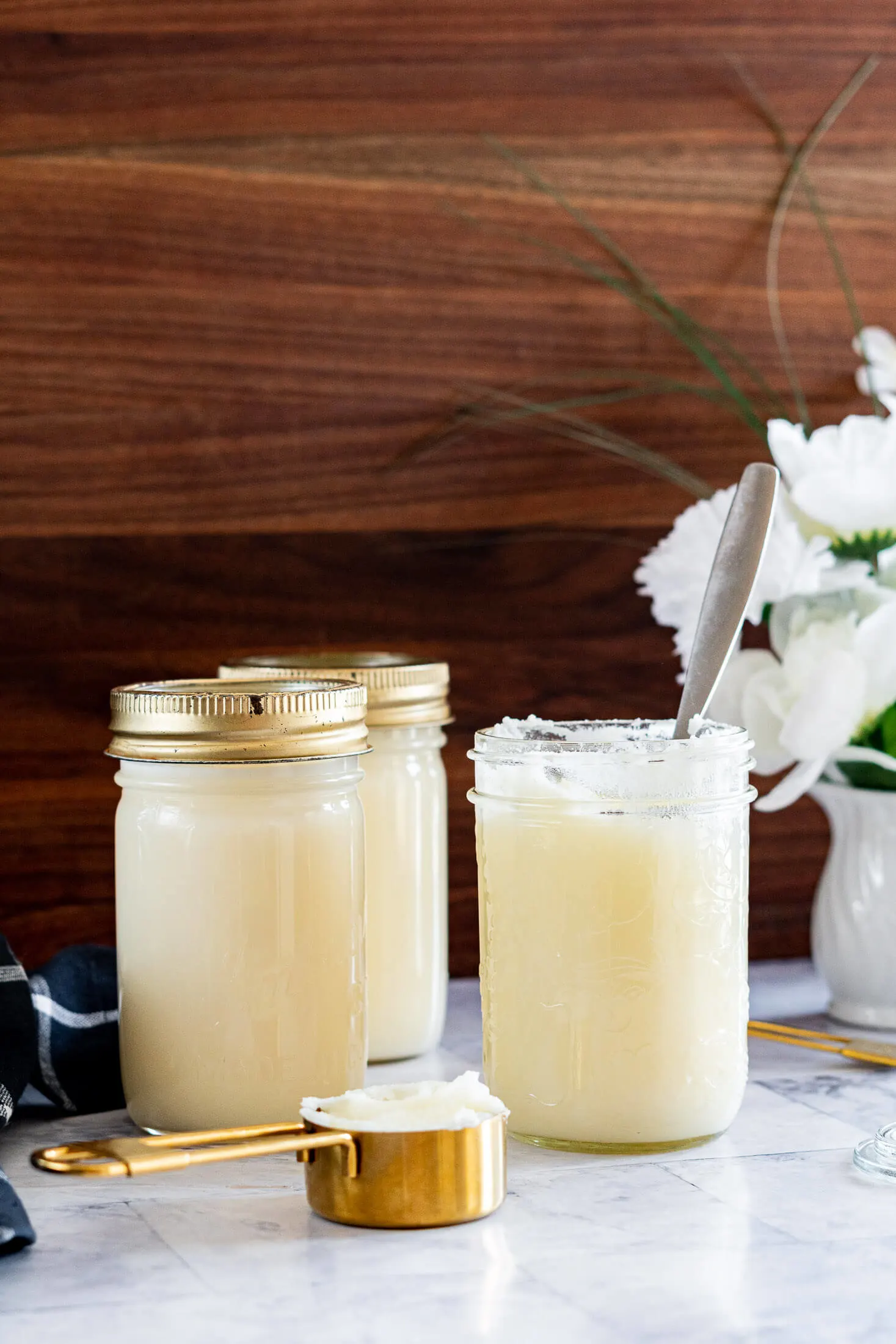
Tallow Vs Lard Vs Shmaltz
Tallow, lard, and shmaltz are all types of rendered animal fats, each with their own unique characteristics and uses.
Tallow is derived from beef fat, or beef suet, and tends to be harder and drier than lard. It makes an awesome savory ingredient, and surprisingly enough, makes a fantastic skincare ingredient.
Lard is rendered pork fat, its soft and malleable texture makes it an excellent choice for baking and frying due to its high smoke point.
Schmaltz is rendered chicken fat, it enhances savory flavors and is also softer like lard, making it suitable for roasting, frying, and greasing pans.

Where To Find Beef Fat
While tallow can be made from a number of ruminant animals, the most commonly used fat comes from beef butchering.
If you're lucky enough to be butchering your own cows, save the suet, or leaf fat, which is located around the kidneys. If you're not butchering your own animals, a local butcher may be able to collect some suet for you as it's not usually a high demand product.
The last, but certainly not least, option is to save beef fat trimmed off during day-to-day cooking. We save all the fat any time we trim and smoke a brisket and pop it into a container in the freezer, then when I have enough for a batch, we tallow!
Pretty much any fat from a cow can be rendered into tallow, the reason leaf fat is preferred is that it usually results in a milder flavor and cleaner scent.
Tips + Tricks
No. 1 --> Cold fat is much easier to work with, if you've been freezing your tallow for a rainy day, it's best to let it gently thaw in the fridge to keep it cold.
No. 2 --> If you have a meat grinder that can handle fats, by all means, feel free to use your grinder. Smaller pieces absolutely speed up the rendering process.
No. 3 --> Opt for wide mouth mason jars to store your tallow. These jars are heat tolerant, won't leach anything into your food, and wide mouths are easier to stick a spoon into!
No. 4 --> If you don't want to render fat on the stove top, you can use a slow cooker on low temperature - I prefer to use the stove top, but you may prefer to use a crock pot!
No. 5 --> Don't forget to save the cracklings that you strain out of the rendered fat. They make a fantastic treat for your backyard flock in cold winter weather. Likewise, do the meat scraps trimmed from the fat!
Key Ingredients + Supplies
Beef Fat: The only ingredient in this recipe is beef fat! As always, try to source the highest ingredients for your recipes as possible, right down to things like fat. High quality grass fed beef fat makes high quality grass fed beef tallow.
Heavy Bottomed Pot: I love to use a heavy pot with a wide base when I'm rendering because they are less susceptible to temperature swings which can scorch your tallow. I generally use a cast iron dutch oven but whatever you have will work. You'll generally need about a quart of capacity per pound rendered.
Filter Material: Inexpensive coffee filters, cheesecloth, or even flour sack towels work great at filtering any solids from the tallow.

How To Make Tallow
Prepare The Fat:
- Prepare a large ice bath and set aside.
- Remove as much muscle tissue as possible. It may be beneficial to have a sharp boning knife handy to help you remove excess meat. Don't worry about perfection as a bit of leftover muscle tissue will not ruin the batch.
- Once cleaned, add the fat trimmings to the ice bath. Allow the fat to sit in the ice bath for 30 - 60 minutes. This step is optional but can help remove meat juices and other impurities while helping to ensure you render a crisp white tallow.
- Remove fat from the water bath and dice into small pieces.
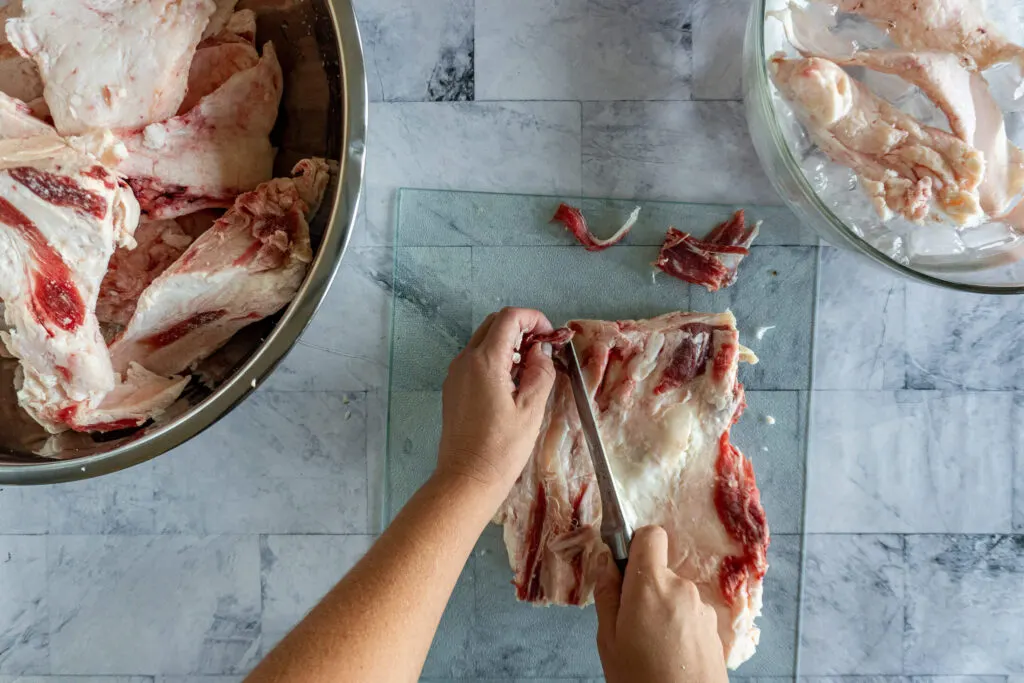
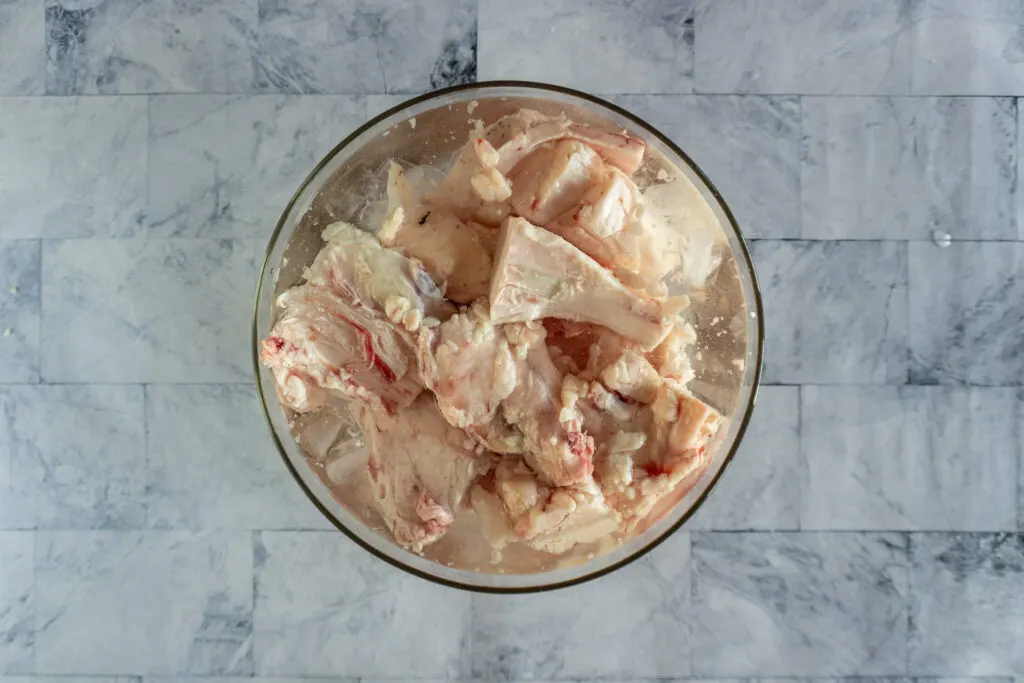


Render The Fat:
- Add chopped fat pieces to a heavy bottomed pot and heat over low heat. Avoid boiling, though a very gentle simmer is fine.
- Meanwhile, prepare storage containers, and wash and dry thoroughly.
- As the suet melts, stir the pot every once in a while to redistribute the fat and speed the process. Skim off any foamy bits that come to the surface as you render.
- Brown bits will begin to form, much like when you're browning butter, and they'll be your guide. The tallow is rendered when the bits, also called cracklings, are golden brown and all of the fat is completely liquified.
- Remove from heat and set aside.




Strain The Fat:
- Line a fine mesh strainer or chinois with a double layer of cheesecloth, a coffee filter, or piece of paper towel. Place over a large measuring cup and carefully pour the hot fat through the filter.
- Examine the tallow, if it needs to be filtered again, pass it through the filter a second time to remove any further impurities, or if well filtered, transfer to storage jars.
- Seal the jars and allow to cool. Once cooled, label each jar with the contents and date.


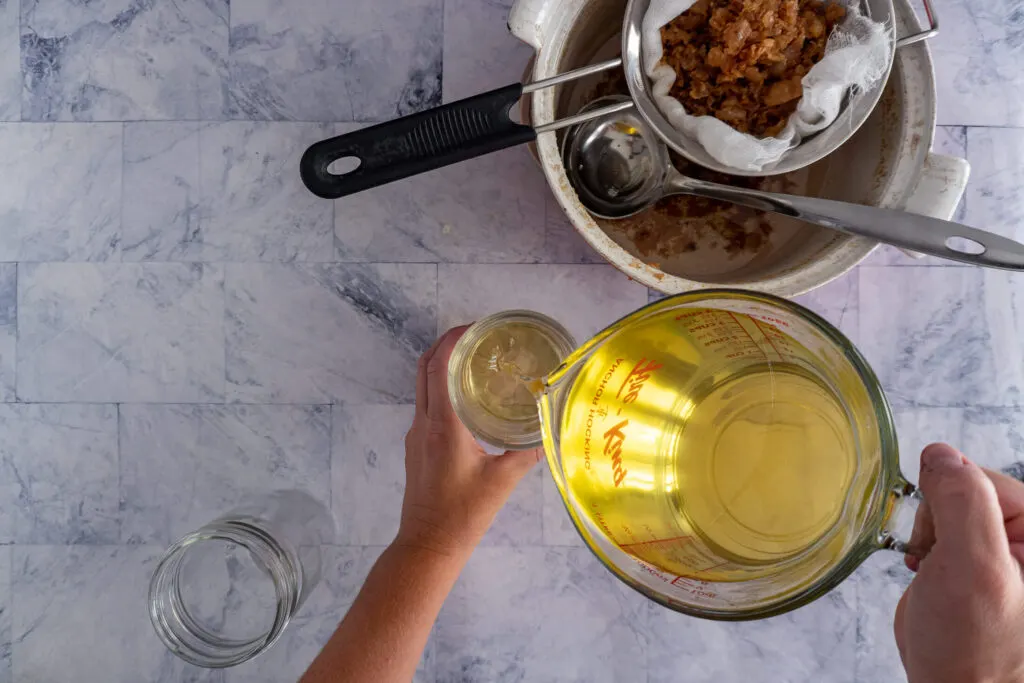

Purifying Tallow For Lotion Or Soapmaking
If you're going to use your tallow for all things delicious, feel free to stop after jarring up the tallow. But if you're going to want to turn your tallow into luxurious soaps and other things, you'll have a couple more steps.
You can use your tallow as is, but I prefer to purify. I find the end product after purifying has less of a beef scent and has a more pure white color.
I do recommend using a large stainless steel bowl to strain your tallow into if you're planning on purifying it, it's just easier to work with than the jars.
- Invert the bowl, and bang out the hardened tallow.
- Chop the tallow coarsely, and place it back into the pot along with 2 cups of water and 1 tablespoon sea salt. If you're purifying large quantities of tallow, use a larger pot and more water and salt keeping the 2:1 ratio.
- Re-melt the tallow and bring to a low simmer. Simmer for 3-4 hours, to allow most of the water to evaporate. During the simmering, skim off any foam or impurities that float along the surface.
- After simmering, strain the liquid into a clean stainless steel bowl and allow to harden, at least overnight. This will allow the fat and any remaining moisture to separate.
- The next day, invert the bowl over the sink, to capture all the water, and chop up your tallow to be wrapped for storage in the fridge or freezer until you're ready to make soaps!
Batch + Storage
Batch:
Generally, you can expect 1 pound of beef fat to yield between 1 and 2 cups of rendered beef tallow. The yield ultimately depends on several factors, including how much meat was left on the fat, type of fat, purity of the fat, etc.
For this batch, 4 pounds of beef fat yielded 3 pints of tallow. Last year, 20 lbs of fat gave 18 pints of tallow.
Storage:
Storing homemade beef tallow properly is crucial to maintaining its quality and extending its shelf life. If kept in a cool, dark place, such as a pantry or cupboard, tallow can last for several months. Ensure it's stored in a well-sealed container to protect it from air and moisture, which can hasten rancidity.
For longer-term storage, refrigeration is the way to go. When refrigerated, tallow can stay fresh for up to a year. The cold temperature slows down the oxidation process, helping to preserve the tallow's flavor and nutritional properties.
And if you're looking at even longer storage durations, freezing is your best bet. Tallow can be frozen for up to two years without significant loss of quality. Just make sure to store tallow in airtight containers or heavy-duty freezer bags to prevent freezer burn. Remember to thaw it in the refrigerator before use.
Uses For Tallow
- Cooking: Tallow is excellent for frying due to its high smoke point, making it a safe option for deep-frying or sautéing. You can also use it for roasting vegetables or meats to add a rich, savory flavor.
- Baking: While not as common, tallow can be used in baking. It can impart an earthy, beefy note to baked goods, which could be an interesting twist in certain savory pastries.
- Soap Making: Tallow produces a creamy lather making it a popular ingredient in homemade soaps.
- Skin Care Products: Tallow can be used to make skincare products like lotions and balms. It can be beneficial to skin.
- Candles: Tallow candles burn cleanly and slowly.

Thoughts From The Homestead Kitchen
Rendering your own beef tallow is not just a cost-effective way of creating a healthy, versatile ingredient for cooking, baking, and even non-food uses, but it's also an excellent way to embrace the philosophy of honor by using every part of an animal and minimizing waste.
Whether you're new to this traditional skill or a seasoned home-renderer, I hope this guide has provided some useful tips and insights to perfect your tallow making.
Don't forget that the quality of the tallow is influenced by the quality of the beef fat you start with and that patience is the name of the game during the rendering process!
How To Make Beef Tallow
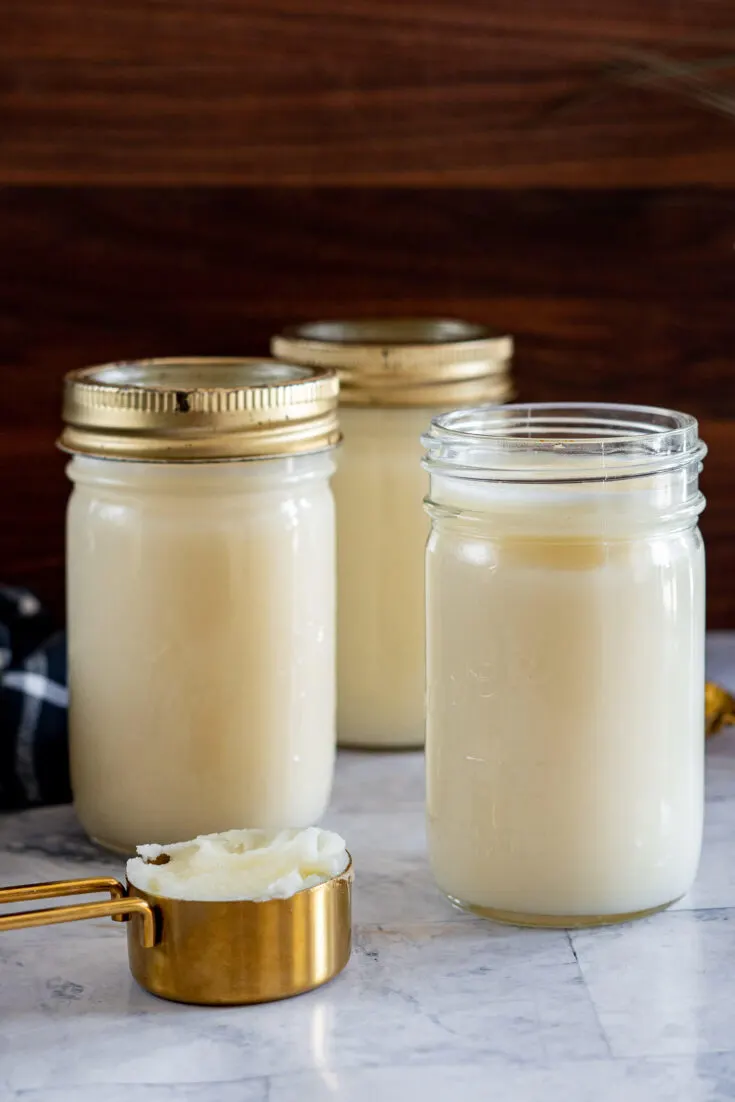
Making beef tallow is a simple process of slow rendering; all you need is quality beef fat and time.
Ingredients
- 4 lb trimmed beef fat
Instructions
Prepare The Fat:
- Prepare a large ice bath and set aside.
- Remove as much muscle tissue as possible. Don't worry about perfection as a bit of leftover muscle tissue will not ruin the batch.
- Once cleaned, add the fat trimmings to the ice bath. Allow the fat to sit in the ice bath for 30 - 60 minutes. This step is optional, but can help remove meat juices and other impurities while helping to ensure you render a crisp white tallow.
- Remove fat from the ice bath and dice into small pieces.
Render The Fat:
- Add chopped fat to a heavy bottomed pot and heat over low heat. Avoid boiling, though a very gentle simmer is fine.
- Meanwhile, prepare storage containers, wash and dry thoroughly.
- As the suet melts, stir the pot every once in a while to redistribute the fat and speed the process. Skim off any foamy bits that come to the surface as you render.
- Brown bits will begin to form, much like when you're browning butter, and they'll be your guide. The tallow is rendered when the bits, also called cracklings, are golden brown and all of the fat is completely liquified.
- Remove from heat and set aside.
Strain The Fat:
- Line a fine mesh strainer or chinois with a double layer of cheesecloth, a coffee filter, or piece of paper towel. Place over a large measuring cup and carefully pour the hot fat through the filter.
- Examine the tallow, if it needs to be filtered again, pass it through the filter a second time to remove any further impurities, or if well filtered, transfer to storage jars.
- Seal the jars and allow to cool. Once cooled, label each jar with the contents and date.
Notes
Batch:
Generally, you can expect 1 pound of beef fat to yield between 1 and 2 cups of rendered beef tallow. The yield ultimately depends on several factors, including how much meat was left on the fat, type of fat, purity of the fat, etc. For this batch, 4 pounds of fat yielded 3 pints of tallow.
You can render as much fat in one go as you have space for in the pot and on the stove.
Storage:
If kept in a cool, dark place, such as a pantry or cupboard, tallow can last for several months. Ensure it's stored in a well-sealed container to protect it from air and moisture, which can hasten rancidity.
When refrigerated, tallow can stay fresh for up to a year. The cold temperature slows down the oxidation process, helping to preserve the tallow's flavor and nutritional properties.
Tallow can be frozen for up to two years without significant loss of quality. Just make sure to store tallow in airtight containers or heavy-duty freezer bags to prevent freezer burn.
Nutrition Information:
Yield:
90Serving Size:
1Amount Per Serving: Calories: 182Total Fat: 20gSaturated Fat: 10gTrans Fat: 0gUnsaturated Fat: 9gCholesterol: 22mgSodium: 0mgCarbohydrates: 0gFiber: 0gSugar: 0gProtein: 0g
Pin This Guide To Making Beef Tallow
